for the 84th Railsplitters Association History
 84th Division History
84th Division History
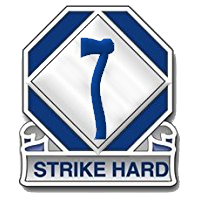
For five decades, from the 1950’s to beyond 2000, the 84th Division was headquartered in Milwaukee, Wisconsin on a former air defense Nike missile site and grounds of a County House of Correction which later became a U. S. Army Disciplinary Barracks also housing German prisoners of war during World War II. The division had subordinate units and soldiers throughout the states of Wisconsin, Illinois, Michigan, Minnesota, Ohio, Iowa, and Indiana. This link to Wisconsin and Milwaukee has forged a bond among those who have served. Missions include providing basic combat training and infantry one station unit training to new soldiers and officer training to ROTC cadets. The division personnel also train active and reserve-component servicemembers in combat-service, combat-service-support, health services and professional-development courses.
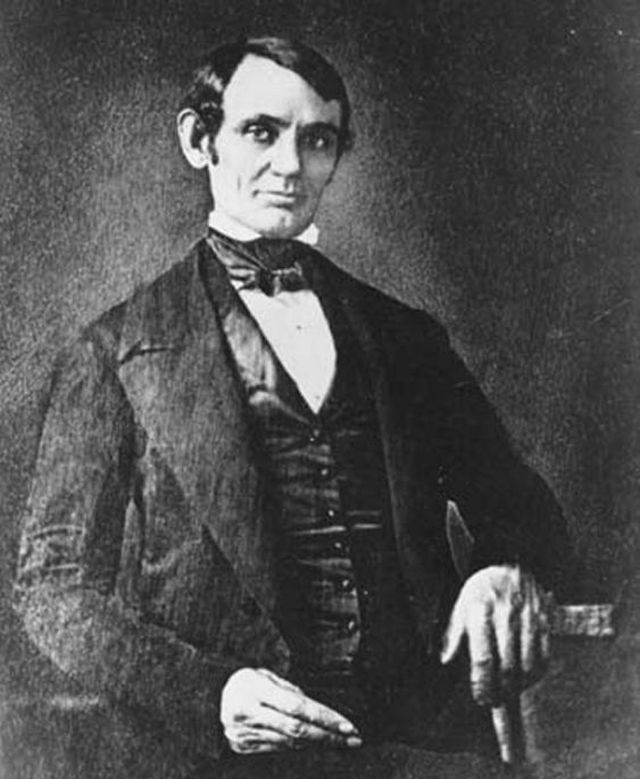
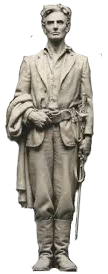 The 84th Division has a history reaching back to Abraham Lincoln and the Black Hawk Indian War of 1832. The division patch is a symbol of that legacy and shows an axe splitting a log for a rail fence — hence the nickname “The Railsplitters.” Lincoln later used the railsplitter theme when he ran for President in 1860. The 84th is the famous “Lincoln Country” Division tracing its lineage back to the militia company in which Captain Abe Lincoln served in Wisconsin during the Blackhawk War. Lincoln volunteered to fight the Indians in 1832 and was mustered into an Illinois unit which trailed Chief Blackhawk as far as what is now Fort Atkinson, Wisconsin. He was elected Captain of his company. He saw no action, but later stated that he “had some bloody battles with the mosquitoes”. The photo of the statue at right represents Lincoln as the Captain of his militia. He was later mustered out as a Private. Lincoln spoke with pride on the floor of Congress about his military service.
The 84th Division has a history reaching back to Abraham Lincoln and the Black Hawk Indian War of 1832. The division patch is a symbol of that legacy and shows an axe splitting a log for a rail fence — hence the nickname “The Railsplitters.” Lincoln later used the railsplitter theme when he ran for President in 1860. The 84th is the famous “Lincoln Country” Division tracing its lineage back to the militia company in which Captain Abe Lincoln served in Wisconsin during the Blackhawk War. Lincoln volunteered to fight the Indians in 1832 and was mustered into an Illinois unit which trailed Chief Blackhawk as far as what is now Fort Atkinson, Wisconsin. He was elected Captain of his company. He saw no action, but later stated that he “had some bloody battles with the mosquitoes”. The photo of the statue at right represents Lincoln as the Captain of his militia. He was later mustered out as a Private. Lincoln spoke with pride on the floor of Congress about his military service.
The 84th Division was not officially formed until August 5, 1917, during World War I. When men from Wisconsin, Illinois, and Kentucky were formed into a new army combat infantry division (the 84th) in 1917, they chose as their nickname “The Railsplitters” harking back to Lincoln’s company from the same region in 1832. The division shoulder patch became
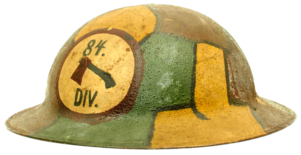 the emblem familiar in Wisconsin today: a white axe embedded in a white log on a circle of Badger Cardinal. The new division trained for 13 months before it was sent to Europe. But instead of entering the fight as a unit, it was split up to provide replacement personnel for other units. Many individual members became heroes during this period. The 84th served in France as a training center for replacements heading toward the Western Front during World War I, and then came home to be demobilized in 1919.
the emblem familiar in Wisconsin today: a white axe embedded in a white log on a circle of Badger Cardinal. The new division trained for 13 months before it was sent to Europe. But instead of entering the fight as a unit, it was split up to provide replacement personnel for other units. Many individual members became heroes during this period. The 84th served in France as a training center for replacements heading toward the Western Front during World War I, and then came home to be demobilized in 1919.
The division was disbanded after World War I. It was not reactivated until 1942, after the Japanese had attacked Pearl Harbor and the United States entered World War II. For 23 years, the 84th was merely a name on a sheet of paper until the unit was reactivated.
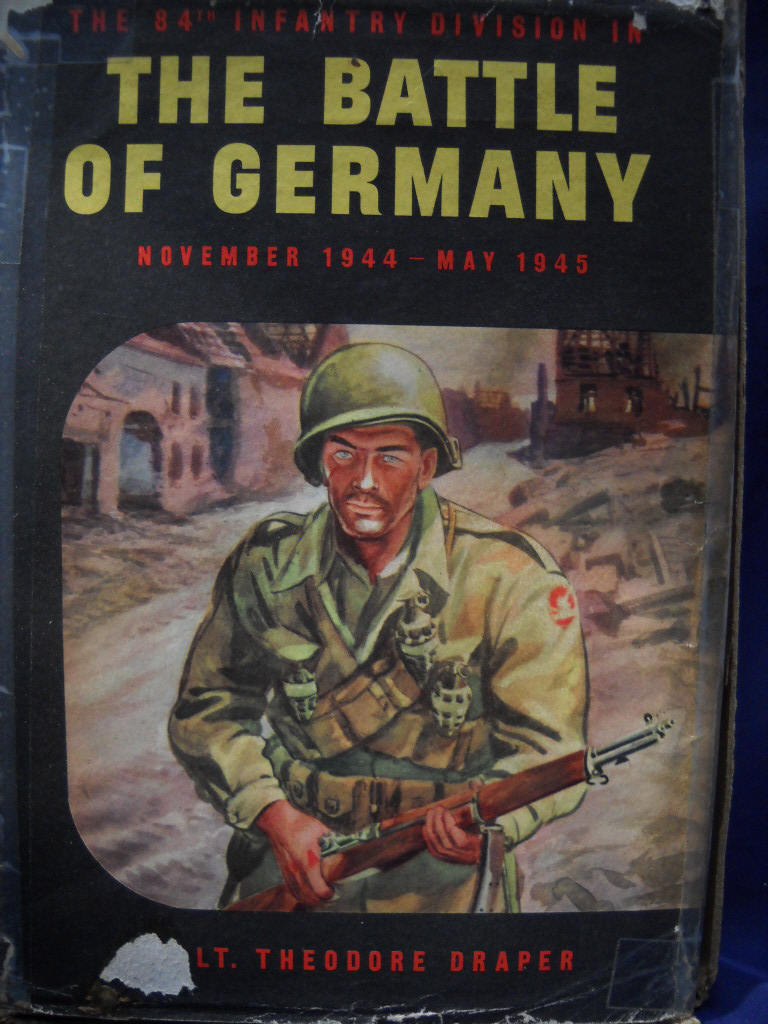 The 84th Infantry Division was activated on 15 October 1942 for action in World War II. It embarked on 20 September 1944 and arrived in the United Kingdom on 1 October for additional training. The division landed on Omaha Beach, 1 - 4 November 1944, and moved to the vicinity of Gulpen, the Netherlands, 5 - 12 November. The division entered combat on 18 November, with an attack on Geilenkirchen, Germany, as part of the larger offensive in the Roer Valley, north of Aachen. They were supported by the British Sherwood Rangers Yeomanry. Taking Geilenkirchen, as part of Operation Clipper on 19 November, the division pushed forward to take Beeck
(Geilenkirchen) and Lindern in the face of heavy enemy resistance on 29 November. After a short rest, the division returned to the fight, taking Wurm and Würm (Geilenkirchen), Mullendorf on 18 December, before moving to Belgium to help stem the German winter offensive (Battle of the Bulge).
The 84th Infantry Division was activated on 15 October 1942 for action in World War II. It embarked on 20 September 1944 and arrived in the United Kingdom on 1 October for additional training. The division landed on Omaha Beach, 1 - 4 November 1944, and moved to the vicinity of Gulpen, the Netherlands, 5 - 12 November. The division entered combat on 18 November, with an attack on Geilenkirchen, Germany, as part of the larger offensive in the Roer Valley, north of Aachen. They were supported by the British Sherwood Rangers Yeomanry. Taking Geilenkirchen, as part of Operation Clipper on 19 November, the division pushed forward to take Beeck
(Geilenkirchen) and Lindern in the face of heavy enemy resistance on 29 November. After a short rest, the division returned to the fight, taking Wurm and Würm (Geilenkirchen), Mullendorf on 18 December, before moving to Belgium to help stem the German winter offensive (Battle of the Bulge).
Battling in snow, sleet, and rain, the division threw off German attacks, recaptured Verdenne, 24 - 28 December, took Beffe and Devantave (Rendeux), 4 - 6 January 1945, and seized La Roche, 11 January. By 16 January, the Bulge had been reduced. After a 5-day respite, the 84th resumed the offensive, taking Gouvy and Beho. On 7 February, the division assumed responsibility for the Roer River zone, between Linnich and Himmerich (near Heinsberg), and trained for the river crossing.
On 23 February 1945, the second day of Operation Grenade, the division cut across the Roer, took Boisheim and Dülken, 1 March, crossed the Niers on 2 March, took Krefeld, 3 March, and reached the Rhine by 5 March. One day before, the 'Krefeld-Uerdinger Brücke' was blown up by Wehrmacht soldiers. The division trained along the west bank of the river in March.
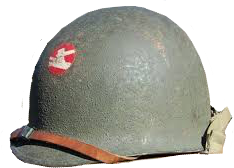 After crossing the Rhine on 1 April, the division drove from Lembeck toward Bielefeld in conjunction with the 5th Armored Division, crossing the Weser River to capture Hanover on 10 April. By 13 April, it had reached the Elbe, and halted its advance, patrolling along the river. The Russians were contacted at Balow, 2 May 1945.
After crossing the Rhine on 1 April, the division drove from Lembeck toward Bielefeld in conjunction with the 5th Armored Division, crossing the Weser River to capture Hanover on 10 April. By 13 April, it had reached the Elbe, and halted its advance, patrolling along the river. The Russians were contacted at Balow, 2 May 1945.
By the end of this war, the division had captured a total of 70,109 prisoners of war. (http://www.history.army.mil/documents/ETO-OB/84ID-ETO.htm)
The 84th has never suffered from lack of battle honors. During World War II, the 84th Division earned (in order below) 7 Distinguished Unit Citations, 18 Distinguished Service Crosses, 1 Distinguished Service Medal, 598 Silver Stars, 4 Legions of Merit, 40 Soldier Medals, 3,416 Bronze Stars, and 59 Air Medals. (http://www.history.army.mil/documents/ETO-OB/84ID-ETO.htm)
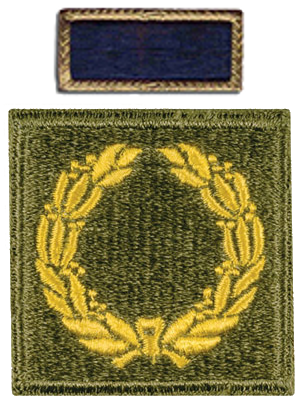
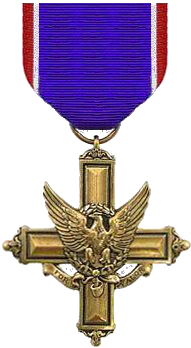
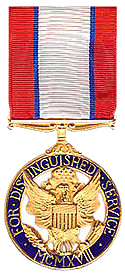

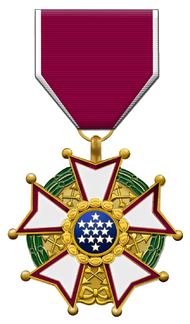
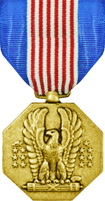
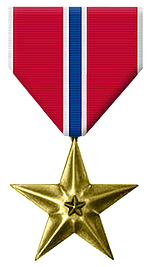
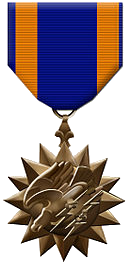
The division remained on occupation duty in Germany after VE-day, returning home to the United States on 19 January 1946 just as it had come home 27 years before. However, this time, there was one big difference, it was no longer just a name on paper. The division became an integral part of the nation's defense program as part of the U.S. Army Reserve, and was designated an Airborne Division, part of America's Ready Reserve. In 1947, it was designated as the army's Airborne Reserve Command. (portions excerpted from Wikipedia)
The division continued as an Airborne Infantry division until 1959 when it was reorganized into a training division with three regiments - the 274th, 334th, and the 339th.
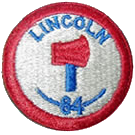
84th Infantry Division
World War I
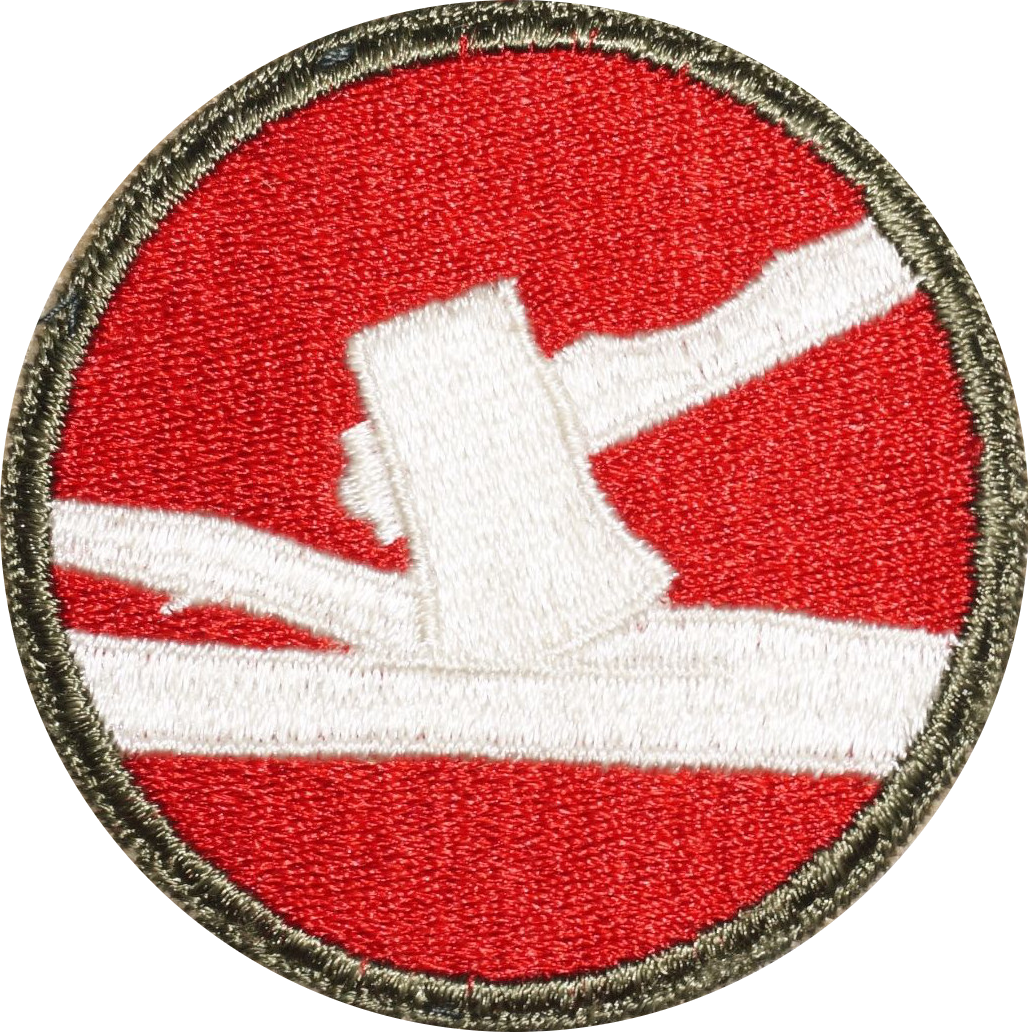
84th Infantry Division
World War II and Present
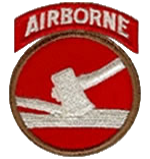
84th Airborne Division
1946 - 1959
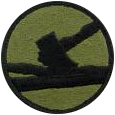
84th Division
(subdued patch)
The training division was then reorganized with 4 Brigades and a Training Group with over 3,000 men and women throughout Wisconsin with the division headquarters in Milwaukee. Three of the brigades, the 1st Brigade, 3rd Brigade, and 4th Brigade, as well as the Training Group and Logistics Group were also stationed in Milwaukee. The 2nd Brigade had its headquarters in Beaver Dam, Wisconsin. The 5091st Reception Station, although not active to the Division, were assigned Battalions. Additionally, subordinate units of the division were located in nine other Wisconsin cities.
On January 21, 1991, a portion of the 84th Division (TNG) was mobilized in support of Operation Desert Storm. More than 500 Railsplitters reported to Fort Sill, Oklahoma, along with equipment and weapons systems to provide refresher training to several thousand reactivated Individual Ready Reservists. On March 22, 1991, after achieving tremendous success, the Railsplitters returned home.
As the result of a reorganization in 1993, the 84th Division (TNG) merged with the 85th Division (TNG) and expanded its area of operation to include Wisconsin, Illinois, Missouri and Iowa. The 84th Division (TNG) provided refresher training in June 1994 for 41 Army Reservists who were deployed to the Sinai in 1995 as part of the U.S. contribution to the Multinational Force Observer (MFO) Sinai Peacekeeping Operations in Egypt from January through July 1995.
In April 1995 the division become an Institutional Training division, again expanding its area of operation to include Wisconsin, Illinois Missouri, Iowa and Nebraska. A subsequent reorganization in August 1995 expanded the traditional missions of the Division (IT) units to include peacetime and mobilization school training of individual soldiers. The reorganization also shifted the command and control of U.S. Army Reserve Forces Schools from the former Army Reserve Commands to the Divisions (IT). The 84th Division assumed responsibility for 14 USARF Schools in Region E, comprised of Wisconsin, Michigan, Minnesota, Illinois, Indiana and Ohio.
Meanwhile, the training model which matches mission to unit and individual soldier qualification had been implemented. Selected units perform initial entry training missions augmenting active forces at Forts Jackson, Knox and Sill. Others perform skill level 1 and 2 training at Ft. McCoy, WI, while others have participated in counterpart training at Ft. Hood, TX. The quality of the 84th Division's support has consistently exceeded active components expectations. 13 Army Achievement Medals by the active component counterparts, and numerous letters of commendation - to a force of only 43 soldiers - was awarded as a result of the 84th Division support to its mobilization station, Ft. Hood, TX.
During the 90's, the 84th Division became an integral force at the U.S. Military Academy where soldiers wearing the Railsplitters patch regularly assist in training the best and brightest future officers of the Army. Both NCOs and Junior officers are sent by the 84th Division to train West Point Cadets in a variety of military subjects at the academy.
Reorganizations have continued to shape the Railsplitter Division. Here are some notable changes.
- 1992 — 84th Division Training: 8 Brigades in Southeastern Wisconsin
- 1993 — 84th Division Training, deactivate 3 Brigades assume 2 from 85th Division: 7 Brigades in 4 States
- 1995 — 84th Division Institutional Training (TASS) (The Army School System), deactivate 4 Brigades, stand up 4 TASS Brigades, assume INOUST Brigade from 70th Div: 7 Brigades in 6 States
- 1998 — 84th Division Institutional Training add Senior ROTC Brigade: 8 Brigades in 6 States
- 2004 — 84th US Army Reserve Readiness Training Command, merge with ARRTC (Army Reserve Readiness Training Center) at Ft McCoy, split HQs between Milwaukee and Ft McCoy, WI. 8 Brigades sent to the 100th Division, gained three full time NCO Academies
- 2005 — BRAC (Base Realignment And Closure) announces move of 84th USARRTC to Fort Knox, KY
- 2006 — 84th US Army Reserve Readiness Training Command, DP 74 adds SROTC, OES (Officer Education System) and ROTC Committee Battalions, assume C2 of 104th Division, stand up 70th Division at Ft Knox, coast to coast operations, structure in 30 States
- 2007 — 84th Training Command (Leader Readiness), renamed from 84th USARRTC
- 2008 — 84th Training Command (Leader Readiness), Milwaukee HQs relocates to Ft Knox in advance of BRAC, 12 FTS move, all others removed or transferred
- 2009 — 84th Training Command (Leader Readiness), Fort McCoy HQs relocates to Ft Knox, 6 FTS move, all others removed or transferred
- 2010 — 84th Training Command Unit Readiness, transfer 104th to the 108th Tng Cmd, send ILE assets to the 80th Tng Cmd, transfer ARRTC and NCO Academies to USARC, assume C2 of 78th and 91st Divisions, stand up 86th Division at Ft McCoy, span of control is coast to coast
- 2012 — 84th Training Command Unit Readiness, continue to operate in a task organization pending CONPLAN (Concept Plan) approval
- 2014 — 84th Training Command Unit Readiness, six battalions added from 108th TNG CMD
- 2014 — 84th Training Command Unit Readiness, CONPLAN approved by DA
- 2014 — 84th Training Command Unit Readiness, 900 authorization added from 1st Army under Bold Shift restructure

Other References
to read about the 84th Division Railsplitters Corridor/Highway



to go to the 84th Infantry Division Page of the Sons of Liberty Museum Website

to go to the Battle of the Bulge Association Website
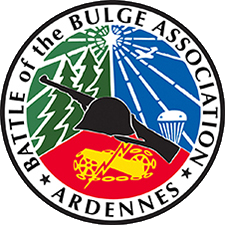
to view video interviews with 84th Infantry Division on YouTube/Cigarette Camps
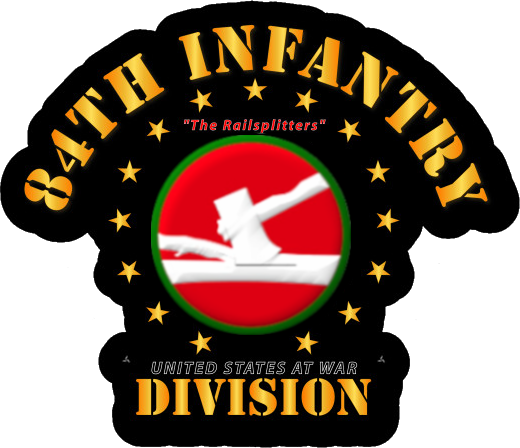

to view YouTube film: Tried by Fire: Part 1
(27:23m)
documenting 84th Division action in WWII Infantry Division on YouTube


to view TouTube film: Tried by Fire: Part 2
(28:33m)


to view TouTube film: DIRTY SECRETS of WW2: Men of the 84th Division
(55:18m)


to read about the 84th Division on Wikipedia.com

to read about the 84th Division on WikiVisually.com

to read about the 84th Division in WWII from LoneSentry.com

to read about the 84th Division Milwaukee Site from jsonline.com

to read about the 84th Division Milwaukee Site from waymarking.com

to read about the Army Disciplinary Barracks

to read about Wisconsin’s Major General McCoy
to view Army Training Commands
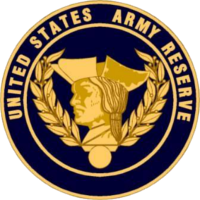
to view a history of U.S. Army Uniforms, Weapons, and Accoutrements
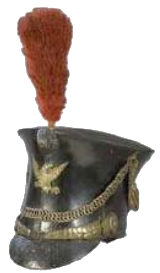
 Return to Top of Page
Return to Top of Page
 Return to Home Page
Return to Home Page